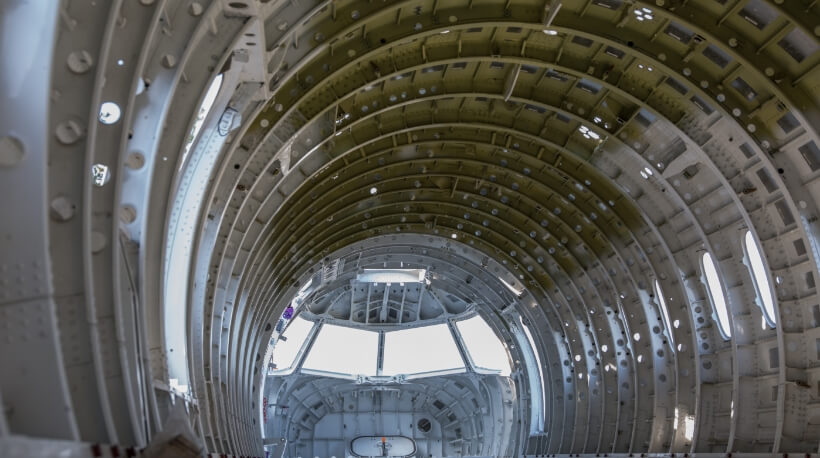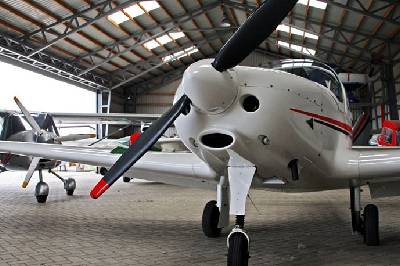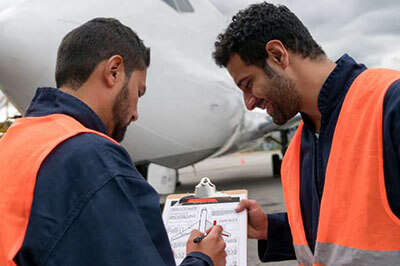An aircraft airframe encompasses the fuselage, wings, tail assembly and undercarriage, providing essential structural strength and rigidity for flight. This critical component is key to an aircraft's performance, efficiency and safety.

What is an airframe? This term might not be familiar to everyone, yet it's fundamental to aviation. The airframe of an aircraft is its skeletal structure, minus the engines – it's the framework that holds everything together, ensuring both the aircraft's integrity and the safety of its passengers.
When we ask, "What is the airframe of an aircraft?" we're diving into the heart of aviation design and engineering. Your airframe might seem straightforward, but its design, development and maintenance are anything but. In this article, we'll provide a comprehensive overview of aircraft airframes and their critical role in aviation. Knowledge of aircraft airframes isn't just for engineers and aviation professionals; it's fascinating for anyone intrigued by the marvel of flight.
Defining the Airframe: A Closer Look
While aircraft airframes are complex components, how we define 'airframe' is actually very simple. An airframe is essentially the skeleton of an aircraft minus the propulsion system. It includes the fuselage, wings, tail assembly and undercarriage. The airframe provides the necessary structural strength and rigidity to withstand the aerodynamic forces during flight. It's the platform onto which engines, avionics and other systems are mounted. Understanding the airframe of an aircraft is crucial as it directly affects its performance, efficiency and safety.
Historical Evolution of Aircraft Airframes
The development of airframes has been a journey of innovation and evolution, paralleling the history of aviation itself. From the Wright brothers' first powered flight in 1903, which used a basic frame of wood and fabric, to the sleek, high-strength alloy and composite materials used today, aircraft airframes have dramatically transformed.
- Early Days of Flight: Initially, aircraft airframes were simple structures made of wood and covered with fabric. They were lightweight but not very durable or efficient.
- Advancements in Materials and Design: With the inclusion of metals like aluminum, airframes became more robust, allowing for larger and faster aircraft. World War II accelerated this development, significantly advancing aerodynamic design and structural integrity.
- The Jet Age and Beyond: The introduction of jet engines brought about a new era in aircraft airframe The need for higher speed and greater altitudes required airframes to be stronger and more heat resistant. This led to the use of titanium and advanced alloys.
- Modern Innovations: Today, the airframe of an aircraft often incorporates advanced composite materials like carbon fiber, which offers high strength-to-weight ratios. These materials allow for more efficient, lightweight and durable designs, significantly enhancing aircraft performance and fuel efficiency.
Anatomy of an Aircraft Airframe
The airframe of an aircraft is a complex structure designed to balance strength, weight and functionality. In this section, we explore the key components of an aircraft airframe and their respective roles, providing a deeper understanding of what goes into their construction and design.
Fuselage: The Central Body
The fuselage is the core component of an aircraft airframe, serving as the central structure to which all other airframe parts are attached. It's the aircraft's main body, housing the cockpit for pilots, cabin for passengers and space for cargo. The design of the fuselage is a critical aspect, as it must withstand various stresses while being as lightweight as possible. Modern fuselages are often constructed with advanced materials like aluminum alloys or composites, providing strength and efficiency.
Wings: The Science of Lift
Wings are probably the most recognizable feature of an aircraft, primarily responsible for generating lift. The wings' shape, size and design are pivotal in determining an aircraft's performance, including its speed, range and cargo capacity. Wings must be strong enough to support the aircraft's weight yet flexible enough to handle the aerodynamic forces during flight. Advanced materials and design techniques, such as swept-back wings, winglets and the inclusion of fuel systems, have significantly enhanced the aerodynamic efficiency of modern aircraft.
Tail Assembly: Stability and Control
The tail assembly, comprising the vertical and horizontal stabilizers, is essential for the aircraft's stability and control. The vertical stabilizer (or fin) helps to maintain directional stability, while the horizontal stabilizer controls the pitch. These components ensure the aircraft remains balanced and controllable throughout various flight conditions.
Undercarriage: Support on the Ground and During Landing
The undercarriage, or landing gear, is a critical part of the airframe that supports the aircraft on the ground and during takeoff and landing. It must be strong enough to absorb the impact of landing and provide stability on the ground, yet be as lightweight as possible to minimize the aircraft's overall weight. The design varies depending on the aircraft type, with some featuring retractable landing gear to reduce drag during flight.

Aircraft Airframe Maintenance and Safety
The maintenance of an aircraft's airframe is crucial for its longevity, performance and, more importantly, for the safety of its passengers and crew. In this section, we'll discuss the importance of regular maintenance of aircraft airframes and explore standard practices that will help keep your aircraft airworthy and reliable.
Importance of Regular Maintenance
The integrity of an airframe is paramount to safe flight operations. Regular maintenance ensures that the aircraft airframe remains in optimal condition, free from structural damages or weaknesses that could compromise safety. This includes inspecting and repairing any wear and tear, corrosion or fatigue that the airframe might experience over time. Aircraft airframe maintenance is a regulatory requirement and a critical practice to identify potential issues before they become hazardous.
- Detecting and Addressing Structural Issues: Regular inspections can reveal hidden cracks, corrosion or other structural weaknesses that are not immediately apparent. Addressing these issues promptly can prevent more serious problems in the future.
- Ensuring Aerodynamic Efficiency: Maintenance also involves ensuring that the airframe's aerodynamic properties are not compromised. This includes repairing or replacing damaged components like wing flaps or fuselage panels.
- Compliance with Aviation Regulations: Regular airframe maintenance ensures compliance with stringent aviation safety standards and regulations, which are essential for the continued certification and operation of the aircraft.
Common Airframe Maintenance Practices
Effective aircraft airframe maintenance involves a series of comprehensive inspections and repair processes, each tailored to different parts of the airframe:
- Routine Inspections: Regularly scheduled inspections, often following manufacturer and regulatory guidelines, to check the overall condition of the airframe. This includes visual inspections, non-destructive testing methods, and detailed checks of all components.
- Corrosion Control: Given the metal components in many airframes, controlling corrosion is crucial. This involves cleaning, using corrosion-resistant materials, and applying protective coatings.
- Stress Checks: Airframes undergo significant stress during flights, especially in certain critical areas. Regular stress checks help identify any fatigue that could lead to structural failures.
- Repairs and Replacements: When issues are identified, timely repairs and replacements of airframe components are vital. This includes everything from minor fixes to major overhauls, depending on the severity of the wear or damage.
- Record Keeping and Documentation: Keeping detailed records of all maintenance activities is essential for tracking the airframe's health and ensuring compliance with aviation standards.
Aircraft Airframe Construction Explained
Having explored the major components of an aircraft airframe, you might be wondering about the intricate process of assembling these structures. How do manufacturers integrate the various parts to create a cohesive, functioning airframe? If you're curious about the detailed techniques involved in aircraft airframe construction, check out this short video.
Frequently Asked Questions: Airframe of an Aircraft
If you still have questions or would like to learn more about the airframe of an aircraft, check out the answers to our most frequently asked questions below.
Are Airframes the Same for All Types of Aircraft?
No. Aircraft airframes vary greatly depending on the type and purpose of the aircraft. For instance, commercial airliners have large, robust airframes for passenger and cargo capacity, while general aviation aircraft feature more versatile and cost-effective designs.
Are There Environmental Considerations In Aircraft Airframe Design?
Yes. Environmental considerations such as fuel efficiency and emissions reduction play a growing role in aircraft airframe design. This includes using lightweight materials and aerodynamic designs to reduce fuel consumption and minimize the environmental impact.
What Is the Lifespan of an Aircraft Airframe?
The lifespan of an aircraft airframe can vary widely, typically 20 to 30 years, but it can be longer with proper maintenance and upgrades. Factors like usage intensity, environmental conditions and maintenance practices influence airframe longevity.
Keep Your Aircraft Airframe In Top Shape With Air Power Inc.
Whether you're a general aviation enthusiast, a private pilot or manage a fleet, ensuring the airframe of an aircraft is in top condition is paramount. For those looking to maintain, upgrade or repair their general aviation aircraft, look to Air Power Inc. With a legacy of excellence and a deep commitment to the aviation community, Air Power Inc. offers an extensive selection of top-grade aircraft airframe parts and components. Our inventory caters to a wide range of general aviation needs, ensuring that you have access to the best products available.
With our comprehensive range of aircraft airframe parts, incredible pricing and unmatched customer service, we're the gold-standard solution for your airframe needs. Trust Air Power Inc. for all your general aviation airframe needs. Shop our entire selection today.
Shop All Airframe Parts
Related Articles: Avionics



